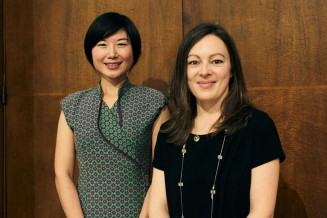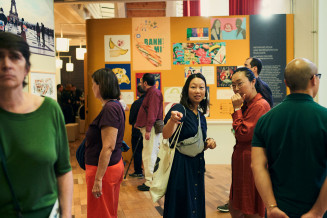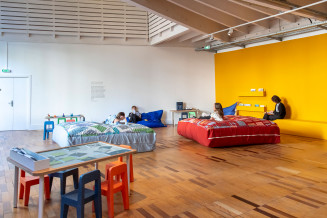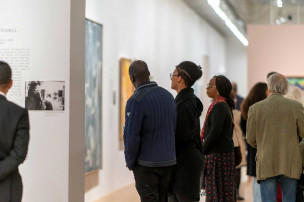
East and south-east asian immigration since 1860
The Musée National de l’Histoire de l’Immigration is opening an Asian cycle this autumn with two new exhibitions: one on the history and diversity of migrations from East and South-East Asia, while the other, entitled J’ai une famille [I Have a Family], explores how the migratory experience marked 10 Chinese avant-garde artists.

Legende
Photo : Pierre Michaud, Quartier asiatique, 13e arrondissement, Paris. 1994 © Gamma Rapho
The exhibition
East and South-East Asian migration in France is age-old and eminently contemporary at the same time. At present, almost 6% of the immigrant population in France originates from China, Vietnam, Cambodia, Japan, Korea, Laos, Thailand, or the Philippines. Retracing more than 150 years of Asian migration to France, this exhibition shines a light on a little-known chapter of our shared history.
From 1860 to the present day, the exhibition retraces the collective and individual paths of East and South-East Asian migrants and their descendants, coinciding with the major upheavals of modern times. Enduring stereotypes, invisibility and discrimination, as well as the battles and initiatives aimed at condemning such attitudes, form an integral part of this history. Works, objects, archives and witness accounts shape the narrative, interweaving history and the individual experiences of migrants and their descendants.
Also

Huang Yong Ping, Chevalier du XXIe siècle empaillé, 2019. Photo. Archives Huang Yong Ping et Mennour, Paris.
© Huang Yong Ping © ADAGP, Paris, 2023
Exhibition J'ai une famille [I have a family]
The exhibition J’ai une famille, 10 Chinese avant-garde artists living in France presents the work of contemporary Chinese artists who settled in France in the 1980s and 1990s, when China’s reform and opening-up policy and the end of the Cold War were shaping a new world order.

Legende
Entrée de l'exposition « Immigrations est et sud-est asiatiques depuis 1860 »
Credit
Photo : Anne Volery © Palais de la Porte Dorée, 2023
Around the exhibition











